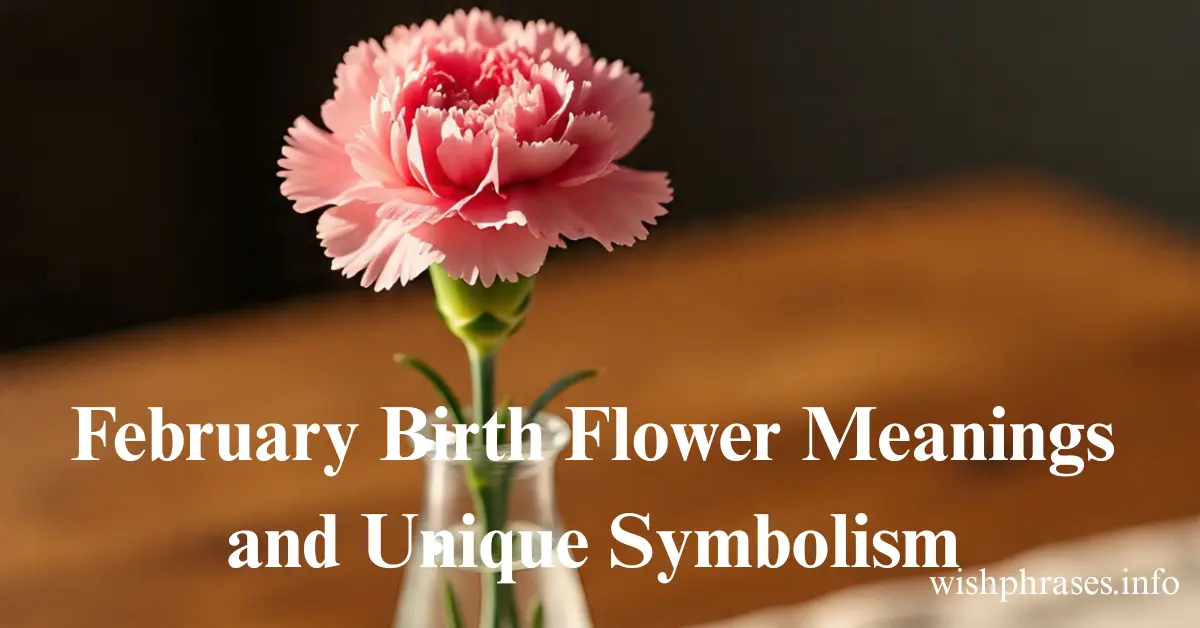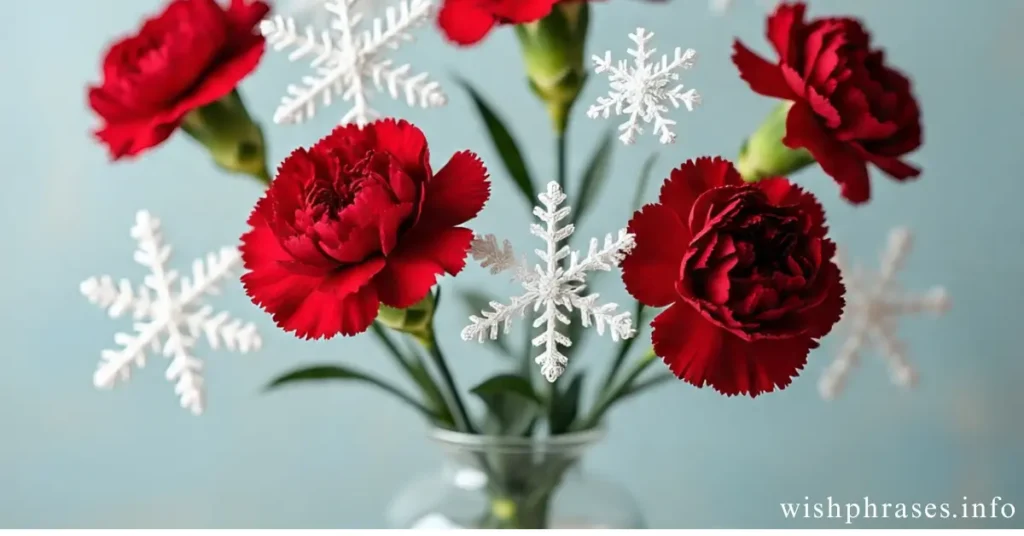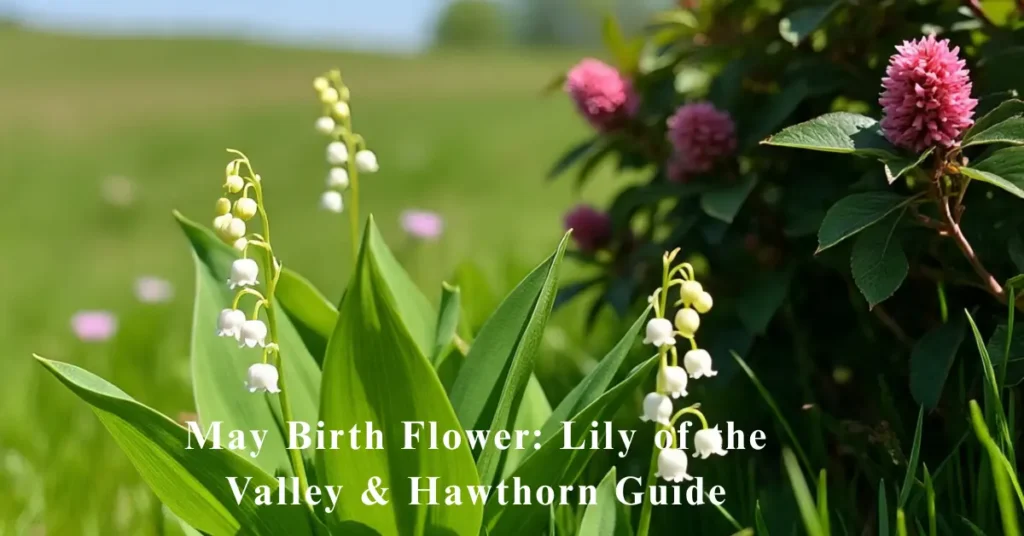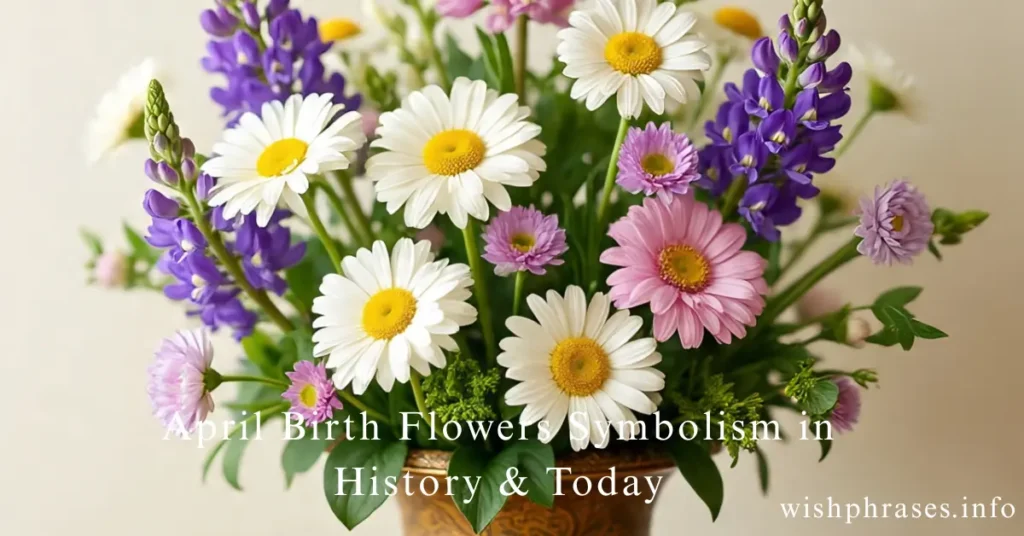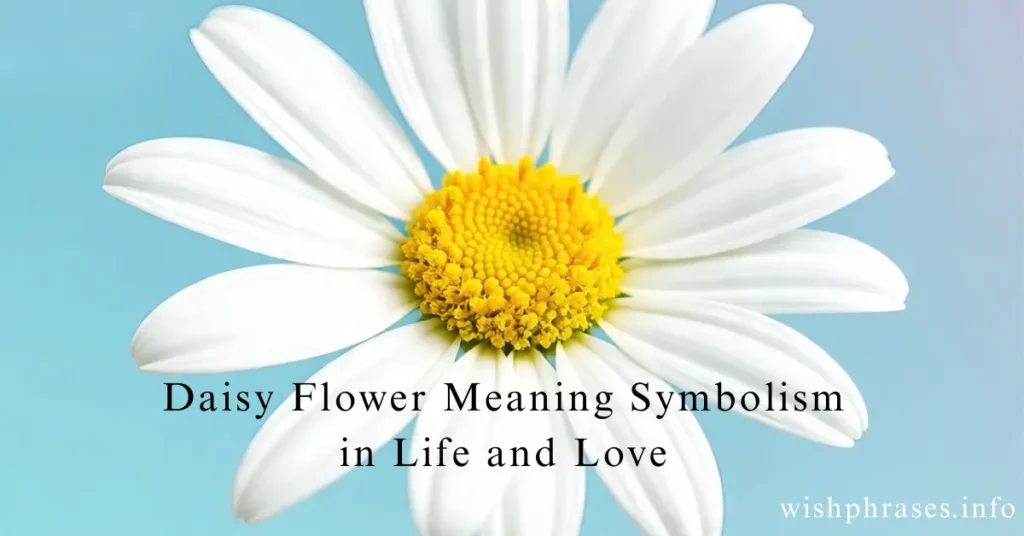When people think of February, they often picture red roses for Valentine’s Day. However, the official February birth flower is not the rose at all.
Instead, the true birth flowers of February are the violet and the primrose. These delicate plants carry a history filled with symbolism, folklore, and timeless meanings.
Both flowers brighten the late winter months and bring a sense of hope when nature is still resting.
Learning about their history, symbolism, and gardening tips will help you understand why violets and primroses are treasured as the February birth month flowers.
There are two birth flowers in February!
It may surprise many that there are actually two birth flowers of February. While roses are strongly connected to Valentine’s Day, the official flowers for people born in this month are violets and primroses.
Both are considered winter birth flowers, blooming even in the cold season. Violets stand out with their purple and blue shades, while primroses come in many colors, including white, yellow, and pink.
Together, they represent resilience, loyalty, modesty, protection, and everlasting love.
February Birth Flower Meaning
The meaning of the February birth flower is deeply rooted in culture and history. Violets symbolize faithfulness, humility, and devotion.
Their colors also carry unique symbolism. A purple violet flower meaning points to loyalty and truth, a blue violet symbolizes devotion, white violets represent innocence, and yellow violets signify high worth.
Meanwhile, the primrose, a birth flower, is associated with love, protection, and youth. In Victorian times, giving primroses was a way to say “I can’t live without you.”
These flower meanings go beyond beauty. In Christianity, violets symbolized the Virgin Mary’s modesty, while in Celtic folklore, primroses were believed to guard doorways and serve as gateways to the fairy world.
Together, these two February flowers are symbols of hope, faith, and love during the coldest time of year.
What Are the February Birth Flowers?
So, what is the February birth flower? The answer is simple: February has two, the violet and the primrose. Both are known for their ability to bloom early when few other flowers appear.
Unlike roses, which peak in June, wild violets in February bring color and fragrance to the winter garden.
At the same time, primroses thrive as perennial flowers in winter, offering clusters of bright blooms that almost glow against the frosty landscape.
These birth month flowers stand as proof that life and beauty continue even when the season feels cold and still.
The Violet
Violet Meanings and Symbolism
The violet symbolism is one of the richest in the world of flower meanings. For centuries, violets have represented loyalty, humility, and everlasting love.
The violet birth flower meaning is especially powerful for those born in February, symbolizing faithfulness and thoughtfulness.
In Victorian flower language, violets were gifted as promises of devotion and sincerity. In religious art, the violet’s spiritual meaning was linked to modesty and the Virgin Mary.
Each shade carries its own interpretation: purple for loyalty, blue for faithfulness, white for purity, and yellow for high value.
The Violet in History
The violet flower’s history stretches back thousands of years. The Ancient Greeks and Romans used violets in love potions, food flavorings, and even funeral traditions.
In the Middle Ages, monks referred to them as the “Herb of the Trinity” because of their three primary colors: purple, yellow, and green.
Later, in Victorian times, violets were considered protective charms that could keep away evil spirits.
In the United States, the state flower violet, was adopted by several states, including New Jersey, Rhode Island, Illinois, and Wisconsin.
Beyond symbolism, violets were used in medicine because they contain salicylic acid, a main ingredient in aspirin.
Violets in the Garden
Many gardeners treasure the violet not only for its beauty but also for its usefulness. Growing violets in garden beds or containers adds color to borders and shady areas.
These woodland garden flowers prefer rich, moist soil and partial shade. To keep them healthy, ensure consistent watering, especially during warmer months.
If you want to know how to grow violets, plant them in early spring, use mulch to keep roots cool, and avoid overwatering.
They are also flowers for pollinators in winter, attracting bees, hummingbirds, and even a special mining bee that only visits violets.
February Birth Flower Tattoo
Many people choose a February birth flower tattoo as a meaningful way to celebrate their identity.
A violet tattoo is popular because of its connection with loyalty and humility, while the violet tattoo meaning also reflects faithfulness and eternal love.
On the other hand, a primrose tattoo meaning often expresses youth, passion, and devotion, making it perfect for those who value romantic symbolism.
Designers create styles that range from delicate outlines to watercolor effects, and the birth flower tattoo chart often shows violets and primroses together for February.
These meaningful flower tattoos are part of the wider trend of birth month flower tattoos, which connect individuals to their birth flowers in a personal and artistic way.
September Birth Flower
Just as February is linked with violets and primroses, every month has its own flowers. The September birth flower is the aster, along with the morning glory. Both represent patience, remembrance, and deep love.
Unlike violets, which bloom in cold weather, asters thrive in late summer and autumn. This difference shows how the list of birth flowers by month reflects seasonal beauty throughout the year.
March Birth Flower
After February comes March, and the March birth flower is the daffodil. Known for symbolizing rebirth and new beginnings, daffodils are a cheerful sign of spring.
Their bright yellow color contrasts with the deep purples of February’s violets, showing the natural transition from flowers that bloom in winter to those that announce warmer days.
While violets and primroses symbolize faith and young love, daffodils are tied to optimism and fresh starts, a perfect match for the arrival of spring.
Birth Flowers by Month
| Month | Birth Flower(s) | Symbolism |
| January | Carnation, Snowdrop | Love, purity, devotion |
| February | Violet, Primrose | Loyalty, humility, youth, protection |
| March | Daffodil | Rebirth, new beginnings, joy |
| Septembr | Aster, Morning Glory | Patience, love, remembrance |
| October | Marigold, Cosmos | Passion, creativity, peace |
| May | Lily of the Valley, Hawthorn | Happiness, sweetness, hope |
The Primrose
When exploring the February birth flower, the primrose often shares the spotlight with the violet. While violets carry a strong reputation for humility and loyalty, the primrose brings with it stories of youth, renewal, and love.
The primrose, with its soft petals and bright colors, is often seen as a sign of hope during the late winter months.
Since February sits on the edge of winter and spring, the primrose reflects this transition perfectly by symbolizing new beginnings and fresh starts.
To fully appreciate this delicate bloom, we need to look closely at its meanings, its role in history, and how it continues to brighten modern gardens today.
Primrose Meanings and Symbolism
The primrose birth flower meaning is deeply tied to ideas of eternal love and youth. In the Victorian flower language, giving a primrose often meant “I can’t live without you.”
This powerful message linked the flower with themes of devotion and affection. Its soft, pastel shades represent innocence and purity, while its blooming during cold months shows resilience and quiet strength.
In addition to love, primrose symbolism also connects to protection and safety. In folklore, primroses were often placed at the doors of cottages to ward off evil spirits.
They were considered lucky flowers, bringing blessings and good fortune to households.
The primula flower meaning also emphasizes renewal and rebirth, reflecting the flower’s ability to bloom at the very edge of winter when most plants still sleep.
Modern interpretations continue to highlight love and care, making primrose tattoo meaning popular among those who want a symbol of devotion and eternal youth on their skin.
It’s often chosen by people born in February or by those who want a birth month flower tattoo that captures the essence of love and resilience.
The Primrose in History
The primrose flower history stretches back centuries, where it has been cherished in both literature and tradition.
In primrose mythology, the flower was often linked to goddesses of youth and fertility, tying it to themes of spring and renewal.
In medieval times, primroses were thought to open gateways to the fairy world, making them mystical and magical in folklore.
One of the most fascinating stories comes from England with Primrose Day, celebrated on April 19th. This day honors the birthday of Prime Minister Benjamin Disraeli, who adored primroses.
The day turned into a cultural event, showing how deeply ingrained primroses became in British history.
Writers and poets have also admired primroses. William Wordsworth and other Romantic poets often used the flower to symbolize innocence, fleeting youth, and the delicate beauty of nature.
The primrose flower spiritual meaning adds another layer, connecting it with eternal life and divine love, often symbolizing a spiritual journey toward light and truth.
Also Visit: 150+ Flirty Instagram Captions to Charm Your Crush Instantly
Primrose in the Garden
Beyond symbolism and history, the primrose is loved for its practical beauty in gardens.
Knowing how to grow primroses is useful for gardeners who want a touch of winter color. Primroses thrive in cool, shaded areas and prefer moist soil, making them ideal for woodland-style gardens.
They are also perennial, which means they come back year after year, offering a sense of reliability and endurance.
Many gardeners also appreciate primrose garden tips for creating vibrant beds with contrasting flowers.
Pairing primroses with other perennial flowers in winter such as hellebores or snowdrops creates a stunning seasonal display.
The bright hues also attract early pollinators, making them important flowers for pollinators in winter when food sources are scarce.
For modern homes, primroses remain a favorite gift in February. They are seen as one of the most hopeful February flowers for garden lovers, symbolizing the promise of warmer days ahead.
Their charm lies not only in their beauty but also in their ability to carry so much cultural, historical, and spiritual meaning within such a delicate blossom.
Final Thoughts
The February birth flower symbolism is rich with meaning, history, and cultural traditions. Both violets and primroses brighten the winter months when few other plants bloom.
The violet birth flower meaning speaks of loyalty and humility, while the primrose symbolism centers on love and protection.
From violet flower tattoo meaning to primrose tattoo ideas, these flowers have become lasting symbols in art and personal expression.
Gardeners also value them as perennial flowers in winter, offering beauty and supporting pollinators when little else is available.
Together, violets and primroses remind us that love, loyalty, and hope can flourish even in the coldest seasons.
Whether you are planting February flowers for the garden, considering birth month flower tattoos, or simply exploring the symbolism of flowers, the story of February’s blooms offers inspiration and connection to the natural world.

I specialize in On-Page SEO, optimizing websites with keyword-rich content, technical fixes, and smart strategies that boost rankings, improve user experience, and drive organic growth.

